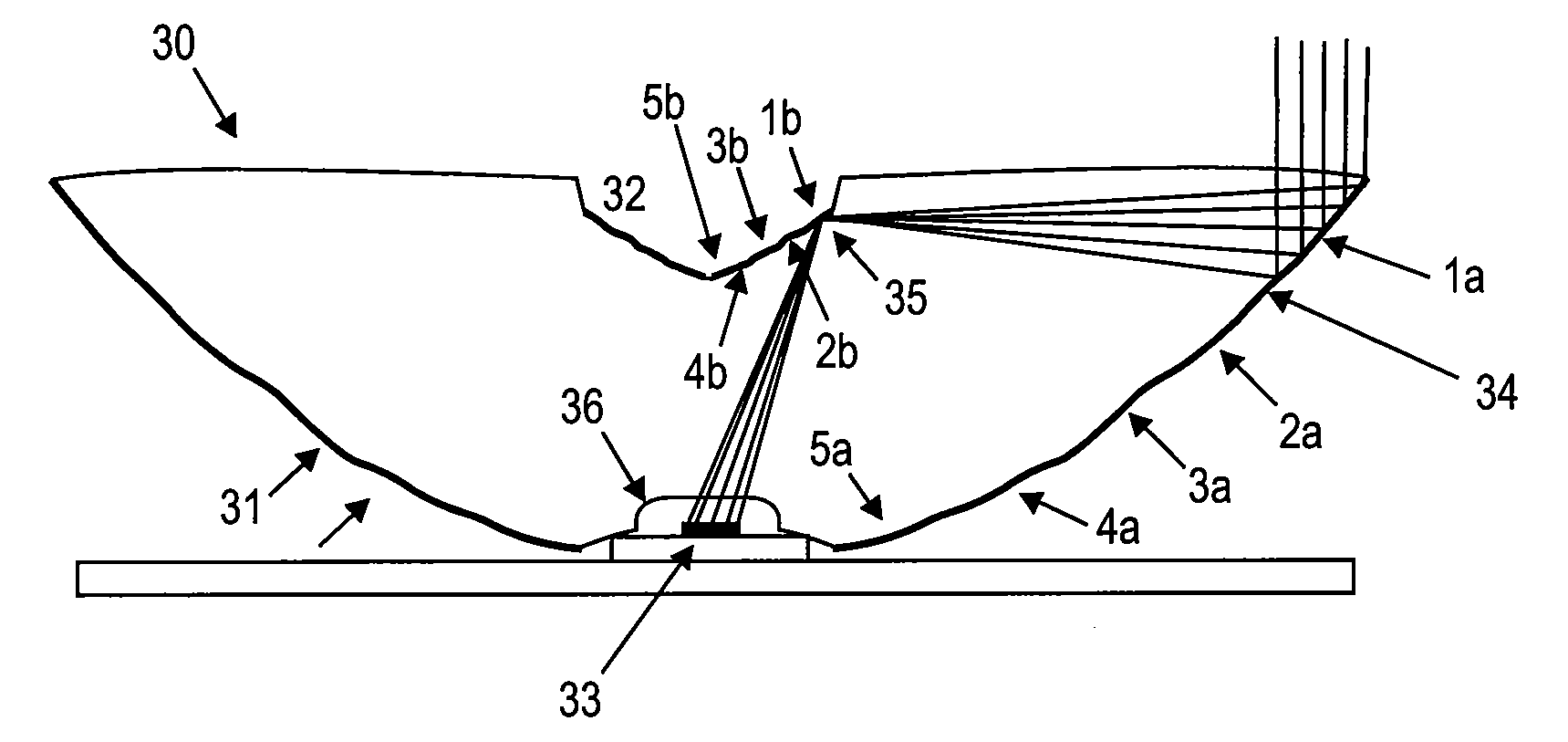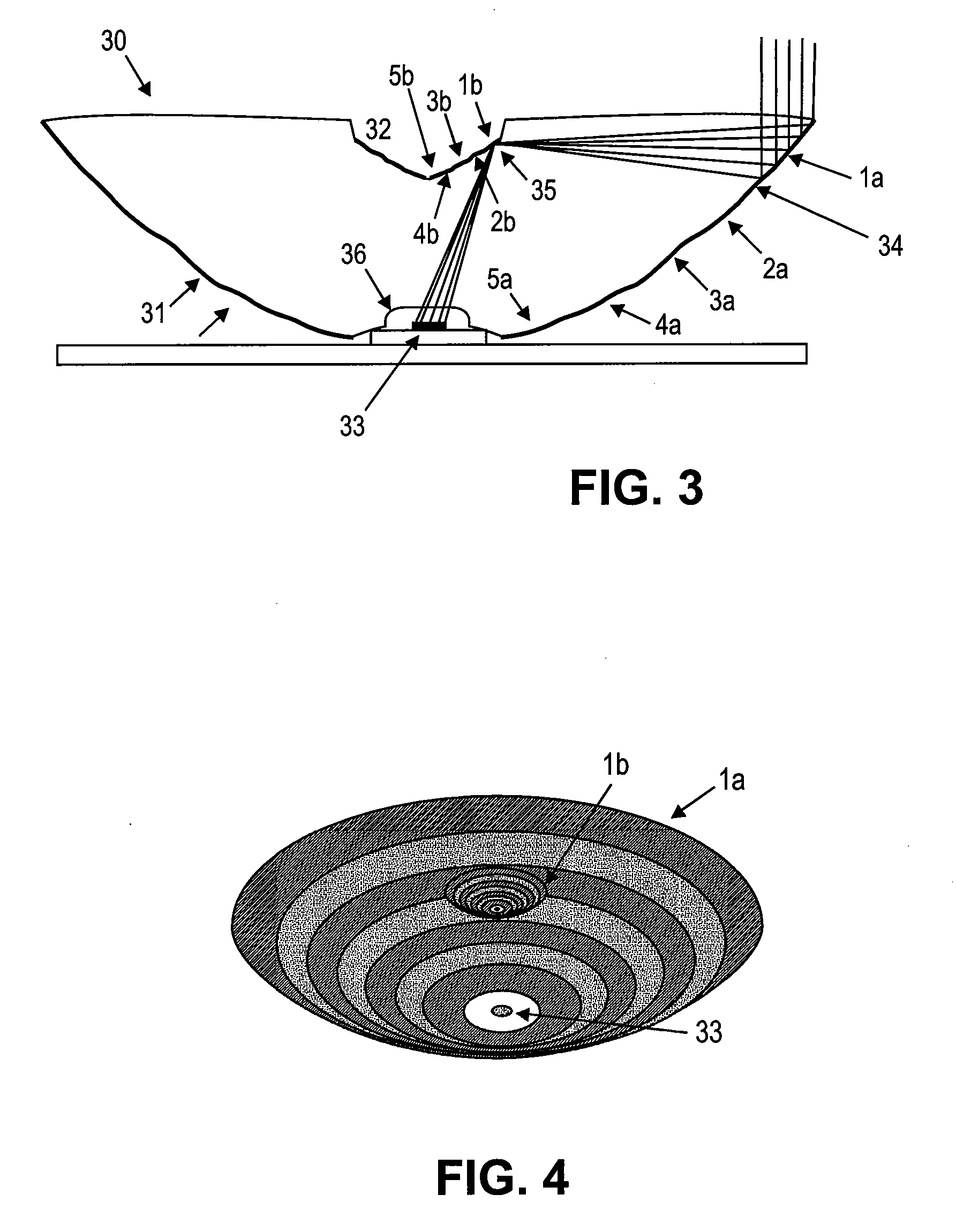Matrix formulation of kohler integrating system and coupled non-imaging light concentrator
- Summary
- Abstract
- Description
- Claims
- Application Information
AI Technical Summary
Benefits of technology
Problems solved by technology
Method used
Image
Examples
Embodiment Construction
[0033]The present invention provides methods for designing optical imaging systems using homogenizers to concentrate and uniformly irradiate a target cell.
[0034]Optical Design
[0035]Kohler illumination techniques are well known in optics for producing uniform illuminance on a target. One advantageous way to implement the technique is to use a matrix representation of paraxial optics. A general on-axis Kohler concentrator in two dimensions has the form:
[ϑ′x′]=[nCμ01 / C][ϑx]
where n is the refractive index of material surrounding the target cell, x-θ and x′-θ′ are the space angle coordinates at the target cell and input aperture, respectively, and μ is a free parameter. One important property of this configuration is that M2,1=0. It then follows that the spatial image distribution of an object at infinity is simply a re-scaling of the spatial distribution on the first lens, which is uniform, with a scaling factor equal to the concentration ratio (in two dimensions in this example). From ...
PUM
 Login to View More
Login to View More Abstract
Description
Claims
Application Information
 Login to View More
Login to View More - R&D
- Intellectual Property
- Life Sciences
- Materials
- Tech Scout
- Unparalleled Data Quality
- Higher Quality Content
- 60% Fewer Hallucinations
Browse by: Latest US Patents, China's latest patents, Technical Efficacy Thesaurus, Application Domain, Technology Topic, Popular Technical Reports.
© 2025 PatSnap. All rights reserved.Legal|Privacy policy|Modern Slavery Act Transparency Statement|Sitemap|About US| Contact US: help@patsnap.com



